U.S. Army Veterinary Corps History
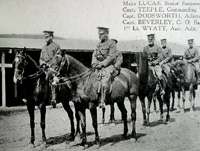
The VH No. 9 Hospital Command Group in mounted formation; MAJ Ratigan, GP Commander; MAJ Lucus, Senior Surgeon; CPT Teeple, Commander, V.H. No. 2; CPT Hodsworth, Adjutant, CPT Beverley, Commander, V.H. No. 2; 1st LT Wyatt, ASST ADJT.
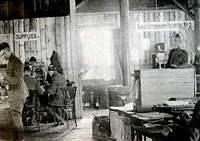
Orderly room of the Base Hospital No. 2. In addition to the medical and surgical areas, Veterinary Hospital and its attached hospitals also had a guard, carpenter details, farriers, a theater, tennis courts and other amenities.
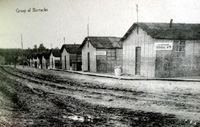
The barracks of Veterinary Hospital No. 9 with the barracks of Base Veterinary Hospital No. 2 next to it. In the foreground is the ever present mud that is commented on in many references.
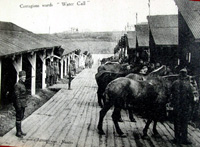
There were numerous horses in the contagious animal wards requiring constant care. The hospital used over fifteen tons of hay and fifteen tons of grain per day. In addition to the feeding this would also result in nearly thirty tons of manure to be removed daily. Notice the boarded walks used to fit the constant mud.
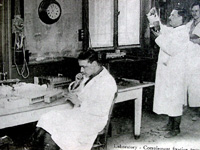
The hospital included its own organic laboratory for testing. Coggins testing, glanders testing and other contagious diseases were routinely handled by the laboratory. Bacteriology was also done in this area. Notice the pipetting by mouth. This scene shows complement fixation testing.
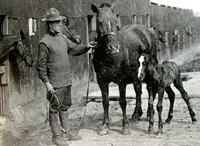
The maternity ward was maintained to provide care during foaling and to the newborn colts.

